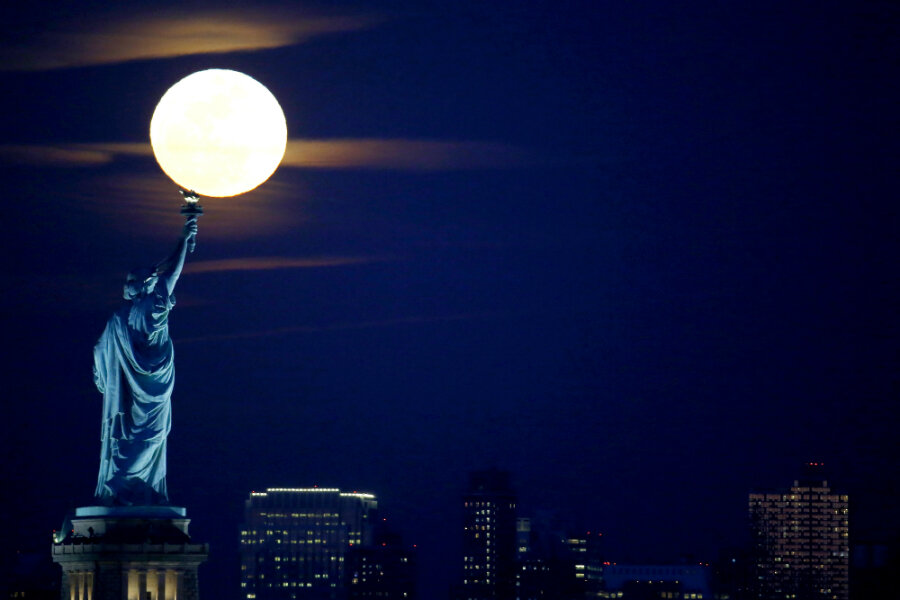Is the moon contributing to earthquakes?
Loading...
Scientists and conspiracy theorists alike have suspected that the moon may cause (or at least contribute to) earthquakes – and now they have data.
A study, published Monday in Nature Geoscience by Satoshi Ide, a seismologist at the University of Tokyo, links extreme high tides with several recent high-magnitude earthquakes, suggesting that just as the moon’s gravitational pull moves the oceans, it can also put pressure on sensitive fault lines in the Earth’s crust.
"We find that very large earthquakes, including the 2004 Sumatran, 2010 Maule earthquake in Chile, and the 2011 Tohoku-Oki earthquake in Japan, tend to occur near the time of maximum tidal stress amplitude," the study authors wrote. "This tendency is not obvious for small earthquakes. However, we also find that the fraction of large earthquakes increases ... as the amplitude of tidal shear stress increases."
The Earth's tides, which rise and fall twice each day, are controlled by the moon's and the sun's gravitational pulls on the water. Twice a month, at the new and full moon, the high tides are at their most extreme because the aligned sun and moon exert their gravitational tug on the oceans in the same plane. This phenomenon is called a "spring tide."
To measure the stress that the moon and sun exert on fault lines, Dr. Ide collected high tide times for two weeks prior to many major earthquakes over the past two decades, and used it to calculate the tidal amplitude.
With this data in hand, he and his colleagues determined that "the probability of a tiny rock failure expanding to a gigantic rupture increases with increasing tidal stress levels."
The research suggests correlation, not causation. Tides simply add to the stress present at fault lines because of shifting tectonic plates.
"We know from studying rock friction in the laboratory that the fault does not go from locked up to sliding in an instant. It can take hours, days, or even longer for the fault to really come un-glued, even when the stress has exceeded the supposed strength," Nicholas van der Elst, a seismologist with the US Geological Survey, told The Atlantic.
The new study looked only at high-magnitude earthquakes, but Dr. van der Elst published a study in July that looked into low-frequency earthquakes. He found that at the San Andreas fault, these tremors were more likely to occur during the moon's waxing phase, when the tides change fastest.
The authors of the new study suggested that their research could help predict future earthquakes, particularly in vulnerable areas, but others are not so sure.
"Scientists will find this result, if confirmed, quite interesting," said University of Washington seismologist John Vidale, who was not part of the study, reported USA Today. "Even if there is a strong correlation of big earthquakes with full or new moons, the chance any given week of a deadly earthquake remains miniscule."








